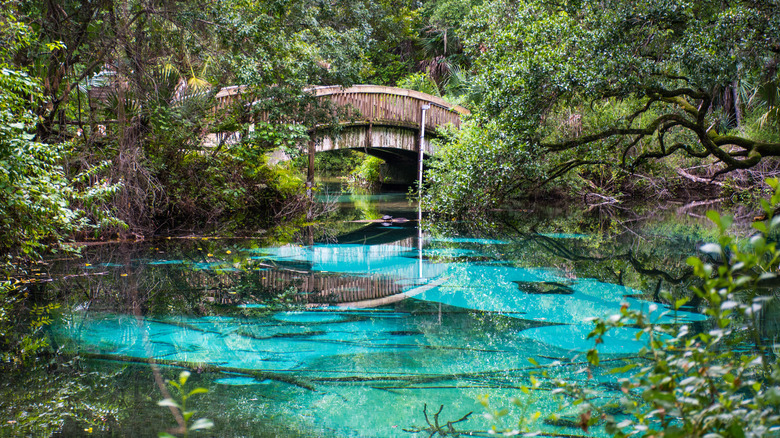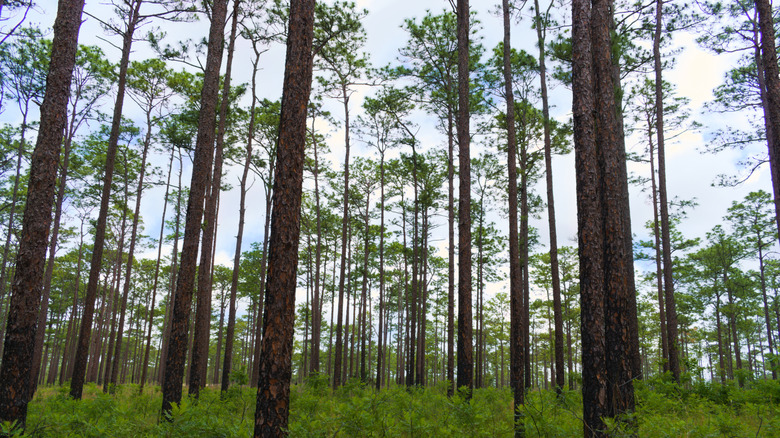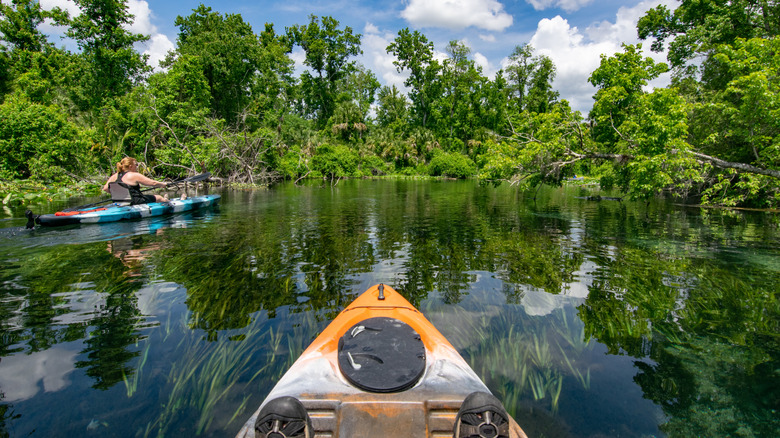Florida's Lush National Forest Is Beloved For Its Wildlife, Turquoise Lakes, And Outdoor Fun
When it comes to tourist destinations in the US, Florida consistently tops the list, and for good reason. While millions flock there each year to experience world-class theme parks and hit its picture-perfect beaches — such as these spectacular stretches of sand in the Keys — the Sunshine State also boasts plenty of natural charms that can be found away from the coast.
Chief among these is the Ocala National Forest, a 387,000-acre spread of pine trees, lakes, spring-fed pools, rivers, swamps, hiking trails, and even archeological sites. The Ocala National Forest is also home to an array of unique plants and wildlife, and offers the kind of quiet and solitude not easy to find in other parts of the state.
People come to the Ocala National Forest to hit the trail, camp, mountain bike, watch birds, fish, or slip into one its waterways on a canoe, paddleboard, or kayak. It's also not the only act in town. Central and northern Florida are home to the Apalachicola and Osceola National Forests, which combined, cover some 1.2 million acres, including 500,000 acres of unspoiled wetlands and 85,000 acres set aside as designated wilderness.
Explore a region of deep pines and pristine waters
The Ocala National Forest was founded in 1908 by President Theodore Roosevelt, and was one of only three national forests east of the Mississippi at the time. The reserve was created in order to protect the area's sand pines (also known as spruce pine or scrub pine), a species found only in Florida. Today, the Ocala National Forest boasts the world's greatest concentration of these iconic trees and the ecosystem that comes with them, earning the region the nickname of the "Big Scrub."
People come to the forest to partake in a number of outdoor activities, including camping. Ocala is home to 21 developed campgrounds with very basic amenities, though Salt Springs Recreation area does have full hookups. Dispersed camping is also allowed, though make sure to know and follow the rules.
The reserve is also a great place for hiking, with scores of paths, along with a 72-mile section of the Florida Trail, which remains the most popular route in the forest. Many people also come to Ocala for kayaking and canoeing. Juniper Run — a 7-mile spring-fed waterway that flows past islands and old-growth forest — is perhaps the best in the reserve — and can be done with a rental kayak.
A wildnerness experience just a stone's throw from Orlando
The Ocala National Forest's natural springs remain one of its greatest draws. These idyllic, crystal-clear pools bubble up from the ground, are known for their warm waters amidst picture-perfect surroundings, and are also spots to encounter manatees in the winter. Along with Juniper Springs, visitors can also take a swim or soak in Salt Springs, the gorgeous Silver Glen Springs, or Alexander Springs — the only one which allows scuba diving.
Ocala is also a a terrific place for spotting wildlife. Common creatures include wild turkeys, bald eagles, white-tailed deer, gopher tortoises, American alligators, and black bears. Bears are widespread throughout the forest, and have been known to cause trouble around campsites, so always exercise bear safety by securing your food in a bear can or storing it inside a hard-topped vehicle, as well as maintaining a clean and tidy camp.
Ocala National Forest is just an hour-and-20-minutes northwest of Orlando by car, making it the perfect getaway from the hustle and bustle of that city's resorts and theme parks — such as this waterpark with some of the best rides and foods in the state. And for more of Florida's unspoiled natural wonder, check out these national parks and preserves to add to your bucket list.


